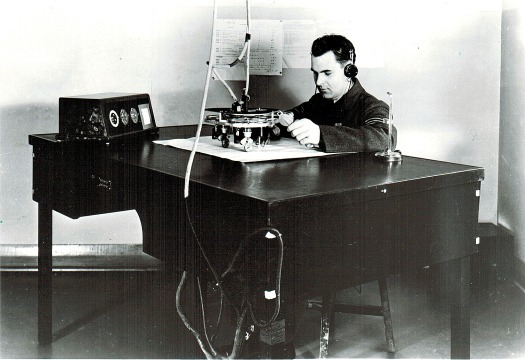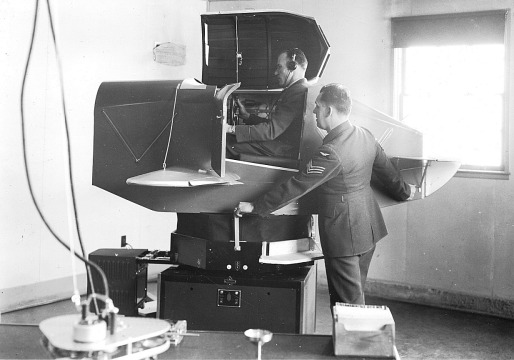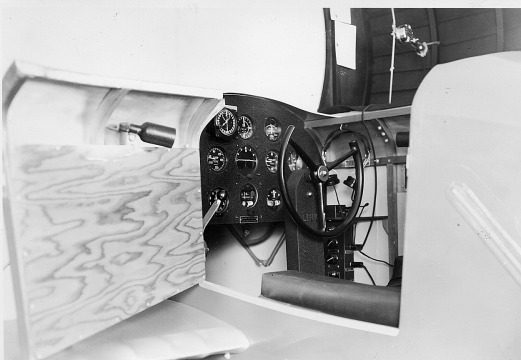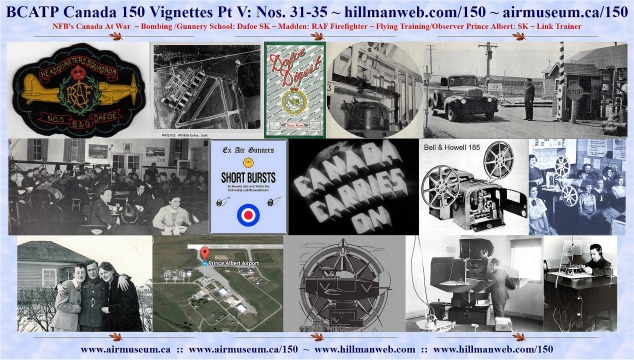Prince Albert Saskatchewan was the home to two
BCATP schools which were concurrently open. No. 6 Elementary Flying Training
School was open between July 22 1940 and November 15 1944 for 1577 days
while No. 6 Air Observer School was open between March 17 1941 and September
11 1942 for 543 days. Both were run by civilian contractors - the North
Saskatchewan Training School (Saskatchewan Flying Club) and the Prince
Albert Observers School. The Royal Canadian Air Force provided instructional
staff to the two schools, Of the 2467 pilots trained at No. 6 EFTS, 1981
were RCAF and 475 were RAF airmen with 11 airmen from other countries.
A total of 615 airmen trained as Air Observers at No. 6 AOS.
Air Observer Students, having completed Initial Training
School, proceeded to an Air Observer School which together with one month
at Bombing & Gunnery School and one month at Navigation School, all
successfully completed, would graduate as an Air Observer.
At Prince Albert, one hangar and the parachute packing
building remain today while a number of commercial buildings have sprung
up around the old school. The city of Prince Albert renamed No. 6 EFTS
and AOS the Glass Field Airport in honor of Floyd Glass, a local man with
a long history as a pilot including time as a pilot instructor during World
War II, General Manager of the Saskatchewan Government Airways and creator
of Athabaska Airways which still operates in Saskatchewan today as Transwest
Air. Mr. Glass died in 2000.
There were a total of 17 fatalities at the two school
– 13 at the EFTS and four, including a civilian instructor, at the Air
Observer School. A large plaque at the airport commemorates the schools
and those who died while in wartime training.
Jack (John Irwin) Moore was a student of No. 6 Air
Observer School. He went on to be a Warrant Officer Navigator/Bomber with
a crew in a Hudson aircraft based near Oman on the Arabian Sea. The crew
was killed when their aircraft crashed while on convoy duty on July 10
1943. The Commonwealth Air Training Plan Museum holds a wealth of Jack’s
artifacts and archival materials donated by his family. Included in the
collection are over 100 letters to and from Jack and his family. We present
four letters sent by Jack to his mother when he was in training at No.
6 AOS. They do not contain any state secrets but give a poignant representation
of what might be going through the mind of a young man in training and
also, insights in to life for a Air Observer in training. Jack’s father,
a veteran of World War I, re-enlisted, in the RCAF and was stationed at
No. 2 Manning Depot in Brandon Manitoba for the duration of World War II.
Two of the letters are shown as photographs - all four letters have been
transcribed to make it eaiser for viewers to read.
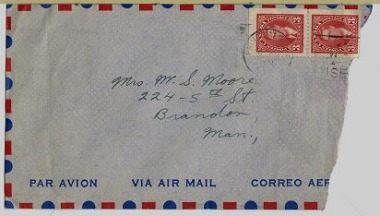
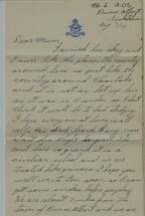
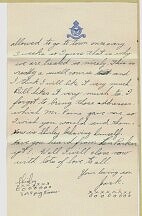
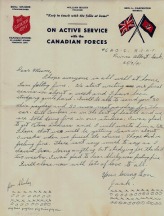
No. 6 A.O.S.
Prince Albert Saskatchewan
Aug. 7/41
Dear Mom,
I arrived here okay and I sure like the place. The
country around here is just like the country around Clear Lake (Manitoba)
and it is not as hot up here as it was in Brandon so I don’t think it will
be to bad studying. I hope everyone at home is all well. Has Dad heard
any more about his Flight Sergeant. The food here is grand , it is a civilian
school and we are treated like princes. I hope you will write Lorie soon
so I can get some smokes before payday. We are about 7 miles from the town
of Prince Albert and we are allowed to go to town once every 3 weeks so
I guess that is why we are treated so nicely. This is really a swell course
and I think I will like it very much. Bill likes it very much too. I forgot
to bring those addresses which Mr. Paine gave me so I wish you would send
them. How is Shirely (brother) behaving himself. Have you heard from Len
Parker yet? Well I will close now with lots of love to all.
Your loving son Jack.
No. 6 A.O.S. Prince Albert
19/8/41
Dear Mum,
I hope everyone at home is all well. I have been
studying my head off and this is really a tough course. I have had ten
flights since I have been here and I like it very much. Our papers did
not arrive at the station for this pay day so they advanced us $10 until
they do come. I met Jim Cameron who works here as a mechanic and he wants
me to go down to Saskatoon for my 48 hour leave. I would not have time
to get to Brandon so I think I will go. I guess Dad is in the Air Force
now, I hope he likes it. The country around here is very beautiful it is
much like the scenery around Clear Lake. We have a picture show here twice
a week which breaks the monotony of study a little, we get 48 hour passes
every 3 weeks which is not very much. I will be able to send you some money
as soon as my check comes. I will close for now with lots of love to all.
Your living son,
Jack
P.S. – Best regards to the Moores.
Bill
No. 6 AOS
Prince Albert Sask.
Sept. 12/41
Dear Mom,
I am very sorry I have not replied to your letter
sooner but it arrived just when I was into my mid term exam. The work is
quite difficult and I have been doing considerable studying. I passed my
mid term exams with an average of 79. The highest average was 84.
I stood 4th in the class, there were 10 fellows failed and were washed
out. I hope that everyone is now in the best of health. I was very sorry
to hear Dad had been sick. I bought a real good clarinette for $63.50 and
it left me a little short of cash for this payday but I will be able to
send you some money towards the end of the month. Had Dad heard anything
about his Flight Sergeant yet. How are all the folks in Brandon? The clarinette
I bought is a Bettany Cadet, and they gave me a swell case & everything.
Ask Mr. Neil if he thinks it is a good one. I am sending you enough money
to cover postage and I would like you to send some of my transpositions
so that I can practice them. We make about 4 flights a week and each flight
is usually about 600 miles so we cover considerable territory. We have
not been down to Brandon yet but I think we may get a chance after we finish
this course. Where did Dal Harris go to, I have not heard from him for
some time. I met one of the fellows that was washed out at Elementary Flying
at Portage (Manitoba) who was on the gunner’s class when I was in the senior
class. He had 45 hours. He got his discharge and is now making $350 a month
flying Ansons. How is Shirley getting along at school? Well I will have
to close for now and get back to my studies. Lots of love to all.
Your loving son,
Jack
P.S. – I will not get any leave on this course but
we will when we get to Bombing & Gunnery.
P.P. S. – I have started smoking a pipe (it saves
money)
#6 A.O.S. R.C.A.F.
Prince Albert Sask,
25/9/41
Dear Mum,
I hope everyone is all well at home. I am feeling
fine. We start writing our final in about a week and I have been studying
quite hard. I will be able to send you $20 this payday and 20 more next
payday for the car. Bill Conibear is in the best of health and we are both
doing fine in our studies. I was glad to get Peter’s address and I will
write him a letter. I hope that we will be getting leave in about 3 weeks
when we finish the course. I hope Dad is feeling fine. There isn’t very
much to say as I haven’t been doing anything but studying for the last
two weeks. I was glad to hear Shirley was feeling fine. I will close now
with lots of love to all.
Your loving son,
Jack
At the close of every letter, Jack Moore included many
xxxxxs (hugs) and ooooos (kisses) to his family and, jokingly to his little
brother, a number of 'pig kisses.'

The Tribute to the Prince Albert Fallen
Located at:
http://www.hillmanweb.com/150/7bcatpPA.html

035 of
150
BCATP: Training -- The Link Trainer Part I
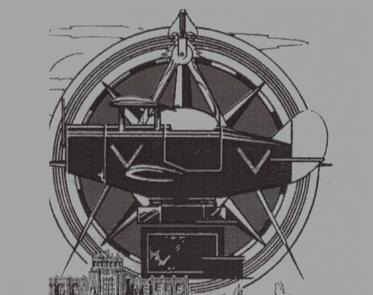 The
Link Trainer was the brainchild of Edwin (Ed) Albert Link, born in Huntington,
Indiana in 1904. As a young man, he was employed in his father's organ
and piano factory in New York. He dreamed of taking flying lessons but
could not afford the cost of fuel, instruction and aircraft time. However,
he developed a 'feel for aircraft operations’ by taxiing a friend’s aircraft
at nearby airfields in Endicott and Courtland New York. Convinced that
he could build a device that would simulate what he had learned while operating
his friend's aircraft, Link set to work in 1927 in the basement of his
factory to build an aircraft flight simulator. By using technology of the
day -- organ bellows and vacuum tubes – he completed the first Link Trainer
in 1929. Seeing a commercial opportunity, Link and his brother opened the
Link Flying School which guaranteed a customer would learn to fly for $85.
Like many businesses at that time. the Great Depression cleaned out the
pockets of most of his prospective customers. However, Link and his fledging
company did produce 100 units by 1931 of which most could be found operating
in amusement parks and parlours throughout America.
The
Link Trainer was the brainchild of Edwin (Ed) Albert Link, born in Huntington,
Indiana in 1904. As a young man, he was employed in his father's organ
and piano factory in New York. He dreamed of taking flying lessons but
could not afford the cost of fuel, instruction and aircraft time. However,
he developed a 'feel for aircraft operations’ by taxiing a friend’s aircraft
at nearby airfields in Endicott and Courtland New York. Convinced that
he could build a device that would simulate what he had learned while operating
his friend's aircraft, Link set to work in 1927 in the basement of his
factory to build an aircraft flight simulator. By using technology of the
day -- organ bellows and vacuum tubes – he completed the first Link Trainer
in 1929. Seeing a commercial opportunity, Link and his brother opened the
Link Flying School which guaranteed a customer would learn to fly for $85.
Like many businesses at that time. the Great Depression cleaned out the
pockets of most of his prospective customers. However, Link and his fledging
company did produce 100 units by 1931 of which most could be found operating
in amusement parks and parlours throughout America.
Tragedy in the early 1930s provided Link's first opportunity
to break into the military market. One week into the first United States
Army-Air Force contract to carry domestic mail by air by a dozen pilots,
all who had been trained to fly by sight only, were killed attempting to
fly their aircraft in inclement weather conditions. Army brass, looking
for ways to improve the odds for their mail planes and pilots were provided
convincing proof of the value of instrument training when Link managed
to fly into a New Jersey airport for a meeting with them in weather conditions
they considered un-flyable. Based on this unscheduled instrument flying
demonstration, the USAAF ordered six of Link's ANT-18 (Army Navy model
18) trainers at a cost of $3500 each.
The prospect of world war in the late 1930s and speculation
that aircraft would be a primary weapon greatly enhanced the market for
Link Aviation Devices Inc. Military planners were quick to realize that
his trainer could provide a substantial portion of a training pilot's curriculum
while minimizing the risk and costs of flight training in actual aircraft.
Thirty-five countries utilized ANT-18 variants of which, over 10,000 units
were produced during the Second World War.
Production continued with this model into the early 1950s.
Faced with a shortage of trainer aircraft in the British Commonwealth Air
Training Plan in 1940, Director of Training Air Vice-Marshall Robert Leckie
ordered 200 Link Trainers. Link retired from the company in 1954 which
was subsequently sold to a number of prominent companies including the
Singer Company, Hughes Aircraft and eventually Raytheon. Today, it is a
part of the L-3 Communications Company Aviation Division and is producing
flight simulators for many of today's modem aircraft including the Canadian
Air Force FA 18 and U.S. Air Force F-16.
The Link Trainer was an incredible success because of
its ability to realistically simulate all types of flying conditions and
situations without the costs and risks of leaving the ground. Before the
Link Trainer, simulating blind flying conditions (fog, darkness, blizzards)
was accomplished by putting the student under a hood in the cockpit of
a flying aircraft. It also proved to be a valuable selection tool for aircrew
trainees. It was dubbed The `Pilot Eliminator' by some whom failed to show
the skills required to pilot an aircraft.
Up to the end of the war, Link Trainers came in two major
versions - open-cockpit (Visual Flight Rules) and cockpit with hood (Instrument
Flight Rules). It is a two It is a two piece system comprised of
the trainer cabin and an instructor's station. The cabin, which resembles
a toy aircraft with stubby wings, is attached to its base by means of a
universal joint which allows movement on three axis in synchronisation
with the pilot's flight path.
The cabin cockpit contains a single-seat, and a stick
or yoke, a full lighted panel of flight instruments and communication to
the trainer's station via headphones and microphone. Bellows, supplied
with air by a pump in the base, move the cabin in three directions simulating
for the trainee all manner of aircraft movements including pitch, roll,
dive, climb, spin, pre-stall buffet, overspeed, etc. The air pump also
supplies air for some of the instruments while a Telegon Oscillator controls
the other instruments and vacuum tubes provide Analog simulator logic to
the unit.
The trainer's station consists of a large glass-covered
map table, a panel duplicating the gauges in the trainer, controls to alter
flying conditions for the trainer, communications with the cabin, and a
moving marker (plotter crab) which moves across the table plotting the
pilot's track. From this station, an instructor can simulate just about
any flying condition for the trainee.
While training or under evaluation, the pilot trainee
would sit in the cockpit responding to directions directly from the instructor
or in a pre-planned flight path just like with an actual aircraft. During
flight, the trainee was required to respond to all types of situations,
like changing wind directions or course deviations, thrown at him by the
instructor.
One measure of success for the Link Trainer is its nomination
as a Historic Mechanical Engineering Landmark by the American Society of
Mechanical Engineers which is given to machines and devices showing innovative
engineering and providing significant improvements to life. Other nominees
honoured with this award include the Saturn V Rocket, Birome Ballpoint
Pen Collection, Bay Area Rapid Transit system, Disneyland Monorail system,
Evinrude Outboard Motor and Holt Caterpillar Tractor.
Ed Link died in 1981. While his Link Trainer washed-out
the piloting dreams of many starry-eyed aircrew trainees, it can also be
credited with saving the lives of many of its graduates who were allowed
to learn solutions to flying problems before they turned deadly in the
cockpit of an actual fighter or bomber in the air.
The Commonwealth Air Training Plan Museum has an IFR version
of the Link Trainer on display in Hangar No. 1 and a couple more in storage
which, when space and funds are found for interpretation, may be displayed
in a "As it Was" format.
The Link Trainer - Part II will be featured in our
next Canada 150 vignette. It will have a couple of examples of
Link Trainer related Pilot Poetry and a couple of stories gleaned from
British Commonwealth Air Training Plan Station Magazines.
Information Sources for this vignette include The Atlantic
Canada Aviation Museum, Wikipedia, L3 Communications, The Allstar
Network, Canada National Defence - Air Force 16 Wing, and the National
Museum of the USAF.
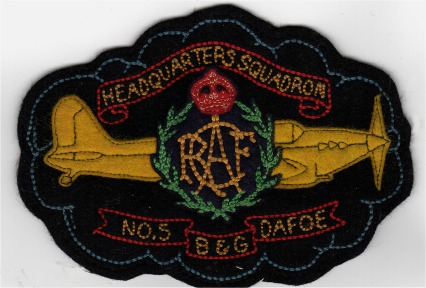 No.
5 Bombing and Gunnery School was one of 21 Royal Canadian Air Force stations
established in Saskatchewan. No. 5 was located approximately 20 km. west
of the town of Dafoe, an uncharact-eristically long distance, in rural
Canada, between a BCATP station and the nearest town. It was one of two
B&G schools in Saskatchewan (11 in Canada), the other being No. 2 B&GS
in Mossbank. Opening on June 23 1941, it remained open for 1,335
days until the RCAF closed it on February 17 1945.
No.
5 Bombing and Gunnery School was one of 21 Royal Canadian Air Force stations
established in Saskatchewan. No. 5 was located approximately 20 km. west
of the town of Dafoe, an uncharact-eristically long distance, in rural
Canada, between a BCATP station and the nearest town. It was one of two
B&G schools in Saskatchewan (11 in Canada), the other being No. 2 B&GS
in Mossbank. Opening on June 23 1941, it remained open for 1,335
days until the RCAF closed it on February 17 1945.
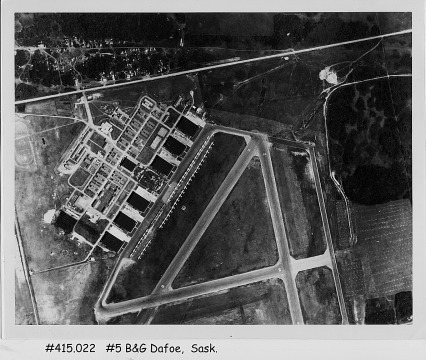
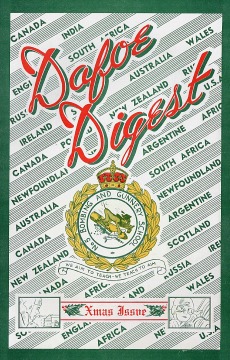
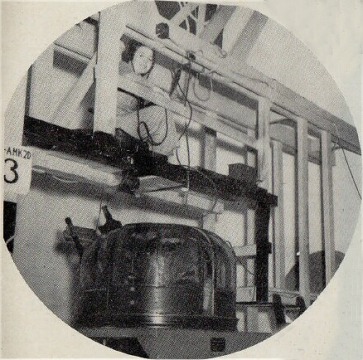
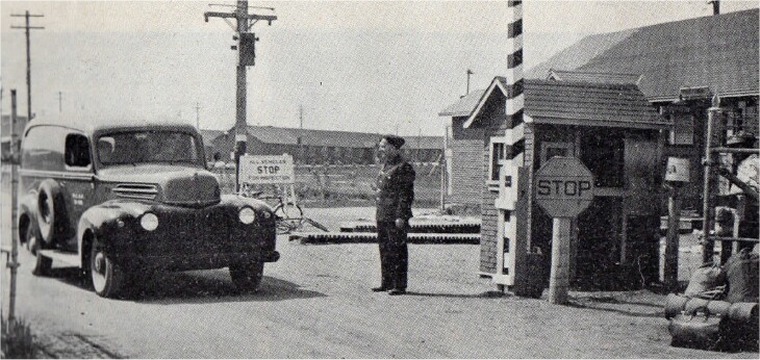
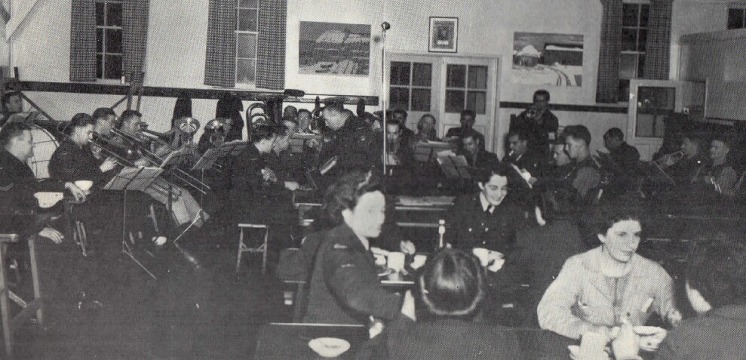
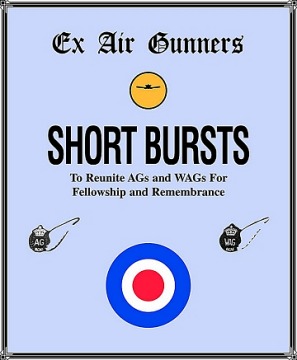
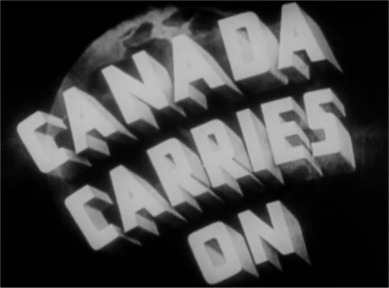
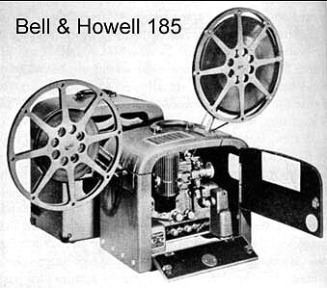
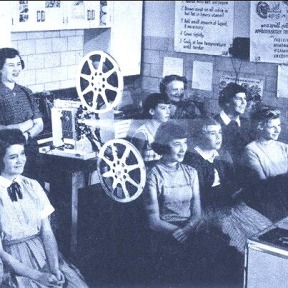
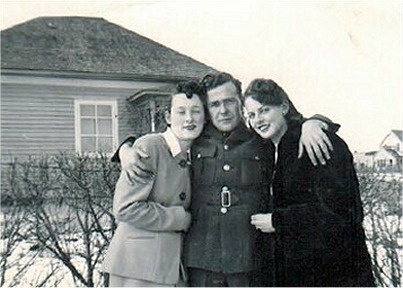
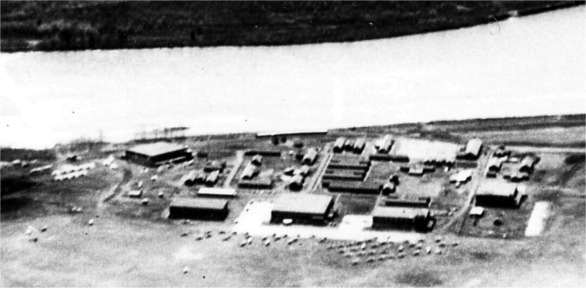
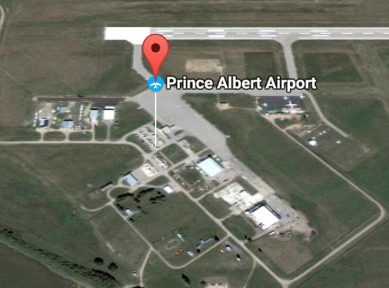




 The
Link Trainer was the brainchild of Edwin (Ed) Albert Link, born in Huntington,
Indiana in 1904. As a young man, he was employed in his father's organ
and piano factory in New York. He dreamed of taking flying lessons but
could not afford the cost of fuel, instruction and aircraft time. However,
he developed a 'feel for aircraft operations’ by taxiing a friend’s aircraft
at nearby airfields in Endicott and Courtland New York. Convinced that
he could build a device that would simulate what he had learned while operating
his friend's aircraft, Link set to work in 1927 in the basement of his
factory to build an aircraft flight simulator. By using technology of the
day -- organ bellows and vacuum tubes – he completed the first Link Trainer
in 1929. Seeing a commercial opportunity, Link and his brother opened the
Link Flying School which guaranteed a customer would learn to fly for $85.
Like many businesses at that time. the Great Depression cleaned out the
pockets of most of his prospective customers. However, Link and his fledging
company did produce 100 units by 1931 of which most could be found operating
in amusement parks and parlours throughout America.
The
Link Trainer was the brainchild of Edwin (Ed) Albert Link, born in Huntington,
Indiana in 1904. As a young man, he was employed in his father's organ
and piano factory in New York. He dreamed of taking flying lessons but
could not afford the cost of fuel, instruction and aircraft time. However,
he developed a 'feel for aircraft operations’ by taxiing a friend’s aircraft
at nearby airfields in Endicott and Courtland New York. Convinced that
he could build a device that would simulate what he had learned while operating
his friend's aircraft, Link set to work in 1927 in the basement of his
factory to build an aircraft flight simulator. By using technology of the
day -- organ bellows and vacuum tubes – he completed the first Link Trainer
in 1929. Seeing a commercial opportunity, Link and his brother opened the
Link Flying School which guaranteed a customer would learn to fly for $85.
Like many businesses at that time. the Great Depression cleaned out the
pockets of most of his prospective customers. However, Link and his fledging
company did produce 100 units by 1931 of which most could be found operating
in amusement parks and parlours throughout America.
